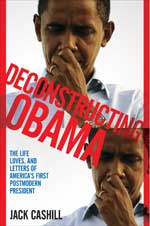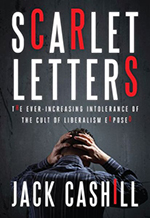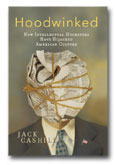NBA All-Stars: So-Non-White
Order Jack Cashill's newest book,
Scarlet Letters
___
Get your copy of Jack Cashill's book, "You Lie!"

___
Get your copy of Deconstructing Obama

___
Jack Cashill's book:
Hoodwinked: How Intellectual Hucksters have Hijacked American Culture
© Jack Cashill
WND.com - January 28, 2016
The National Basketball Association recently announced the starting line-ups for its upcoming All-Star game, and voters, whether consciously or not, reflected the nation’s institutional racism by shutting out all non-black players.
The starting teams have no Europeans, no Latin Americans, no white Americans, and no Asians, American or otherwise. Some people might argue that Lebron James and Kevin Durant are better players than, say, Jeremy Lin and J.J. Redick, but “better” is a mighty subjective term. Voters apparently bought into the cruel stereotype that blacks are superior athletes.
One person we have to thank for the spread of this unpleasant virus is the unfortunately named Dale Lick, former president of Florida State University. In 1993, Lick made the mistake of going public with his belief that that African Americans might somehow deserve their overrepresentation on the NBA All-Star team.
True, Lick made an unlikely racist. Prior to the controversy, Lick’s tenure at Georgia Southern University had been, in the words of one black writer, “the most progressive period in the history of the college.” No one suggested otherwise.
After nearly a decade at Georgia Southern, Lick took the job as president at the University of Maine. Although his success in building GSU’s football program made him an attractive candidate elsewhere, his interest in sports would prove his undoing.
In 1989, at a student senate meeting about athletic competence, Lick was asked why black athletes seemed to dominate the university’s football and basketball programs. In response, he trotted out the most tired of racist clichés.
Citing research done by a retired Georgia Southern physical education dean, Lick answered, “A black athlete can actually out-jump a white athlete on the average, so they’re better at that game. The same is true for football. The muscle structure of the black athlete typically is more suited for certain positions in football and in basketball.”
Lick tried to qualify his answer with the phrases “on the average” and “typically,” but the cat was out of the bag. Lick actually went public with the unholy idea that blacks and non-blacks were somehow physically different.
True, some have observed that all fifty-six finalists in the last seven Olympic men’s 100-meter races have been of West African descent. Lick, however, missed the opportunity to point out that this seeming dominance has everything to do with the athletes’ environment, their history, and their storied “lack of other opportunities,” no matter where in the world they might live.
Lick would have done well to ignore the racist tripe that the West African body type--the “generally” narrower hips, lighter calves, higher percentage of fast-twitch muscles, and other physiological factors—had something to do with black success.
Sociology, however, did not interest Lick. He was forced to apologize for trotting out these racist stereotypes. As testament to the institutional racism of academia, however, this incident did not derail his career.
Soon afterwards, in fact, Lick accepted the presidency of Florida State University, but his ambition was even greater than his bigotry. In 1993, after two years at Florida State, Lick applied for the presidency of Michigan State University, his alma mater.
According to the New York Times, a snitch contacted the Detroit Free Press. Once the story of Lick’s racist diatribe at Maine went national, Michigan State dropped Lick from atop its short list quicker than you could say “nappy-headed hos.”
To Lick’s horror, Florida State wanted him gone as well. In fairness to Florida State, its board members had a legitimate gripe in that Lick had discreetly applied for another job after only two years on campus.
But happily, in the progressive bastion of academia, a New York Times’ headline like “Racial Remark Stalls Job Seeker” guaranteed a quick exit. Likely to avoid litigation and short circuit bad press, board members quietly agreed to keep Lick on campus as a professor.
Lick had to be glad they did. With this Scarlet R for racism a-blazing, it is hard to believe anyone else would have hired him.
As authors Richard Herrnstein and Charles Murray noted in their controversial 1994 bestseller, The Bell Curve, “Intellectual fashion has dictated that all differences [between races] must be denied except the absolute undeniable differences in appearance.” In reality, this was more than just fashion. By the time Lick was humiliated, it had hardened into dogma. He just never got the memo.



